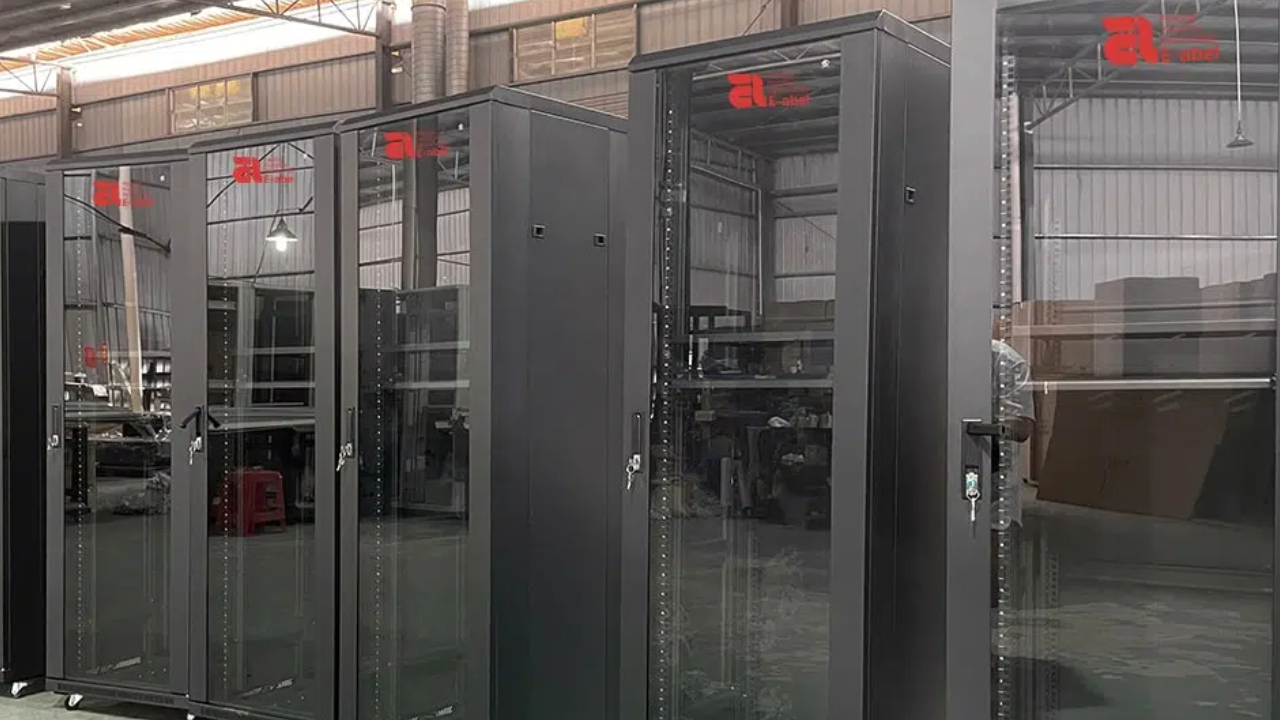Server cabinets, also known as server racks or enclosures, are the backbone of data center infrastructure. These cabinets are intended to hold servers, networking devices, and other hardware components in a compact and standardized form factor. Server cabinets are essential for optimizing space utilization, simplifying effective cable management, and safeguarding critical assets. Server cabinets provide scalability, reliability, and ease of maintenance.
Server cabinet manufacturers design, manufacture, and distribute server cabinets, racks, and enclosures for data centers, server rooms, and other IT environments. Server Cabinet Manufacturers often offer a diverse product line to meet a variety of equipment sizes, form factors, and mounting needs. They use steel, aluminum, and composite alloys to build long-lasting cabinets that can handle the demands of the current IT infrastructure.
Essential Practices for Optimal Performance of Server Cabinets
The server cabinet is a vital component of any data center or server room. Server cabinets, which store and preserve these critical assets, are frequently ignored amid the buzz of high-performance servers and cutting-edge networking equipment. In this detailed article, we look at the necessary maintenance procedures for server cabinets to ensure optimal performance and endurance.
Dust and Debris Management
Dust and debris management is critical for ensuring proper ventilation and reducing overheating in server cabinets. Regular cleaning of both interior and exterior surfaces helps to remove accumulated dust and debris, which can restrict ventilation channels. Compressed air or specialized cleaning equipment can effectively dislodge and remove dust from fans, vents, and filters, maintaining continuous airflow and protecting hardware components.
Airflow Optimization
Airflow optimization is crucial for keeping server cabinets at the right temperature and maximizing efficiency. By neatly organizing wires and eliminating clutter, airflow routes are kept clear, allowing hardware components to cool more easily. Cable management accessories, such as ties and trays, can help maintain airflow channels. Regular examination and cleaning of ventilation fans ensures that they perform properly, improving airflow within the cabinet.
Temperature Monitoring
Temperature monitoring is critical for preventing overheating and ensuring the longevity of hardware components in server cabinets. Installing temperature sensors throughout the cabinet enables regular temperature monitoring. If temperatures rise above recommended levels, corrective actions such as increasing fan settings or installing more cooling equipment can be implemented quickly. This proactive technique helps to maintain ideal operating conditions while reducing the chance of hardware failure due to overheating.
Cable Management
Effective cable management is critical for keeping server cabinets tidy and efficient. Using cable ties, trays, and routing accessories helps to organize wires cleanly, reducing clutter and eliminating airflow blockages. Proper cable labeling and documentation make troubleshooting and maintenance easier. By establishing strong cable management techniques, organizations can increase airflow, reduce the danger of cable disconnections, and ensure a simplified infrastructure.
Security Checks
Regular security inspections are essential for protecting sensitive data and preventing unauthorized access to server cabinets. Inspect locks, access controls, and surveillance systems to ensure they work properly. Additional security measures can improve protection even further. Organizations can reduce the risk of data breaches and unauthorized access by implementing strong security protocols that protect vital assets located within server cabinets.
Component Inspection and Maintenance
Regular inspection and maintenance of components within server cabinets is required for peak performance. Look for evidence of wear, damage, or corrosion on power supplies. To avoid hardware failures, promptly replace any damaged parts. Lubricate moving parts to maintain smooth operation and adhere to manufacturer recommendations for maintenance intervals and procedures. This proactive approach increases the longevity and dependability of hardware components.
Environmental Monitoring
Environmental monitoring within server cabinets is critical for ensuring that equipment operates at peak efficiency. Sensors monitor characteristics and power consumption, delivering real-time data and alarms in the event of anomalies. Adjust environmental settings as needed to protect hardware components and reduce the likelihood of overheating or environmental damage. This proactive monitoring contributes to a stable and efficient operational environment within server cabinets.
Summary
Regular maintenance is essential for ensuring that server cabinets work optimally, reliably, and long-term. Organizations may reduce downtime, extend the life of hardware components, and protect their important data assets by employing a proactive maintenance plan. Investing time and resources in effective maintenance methods is not only a preventive step, but also a solid strategy for ensuring a strong and resilient infrastructure in today’s digital age.

